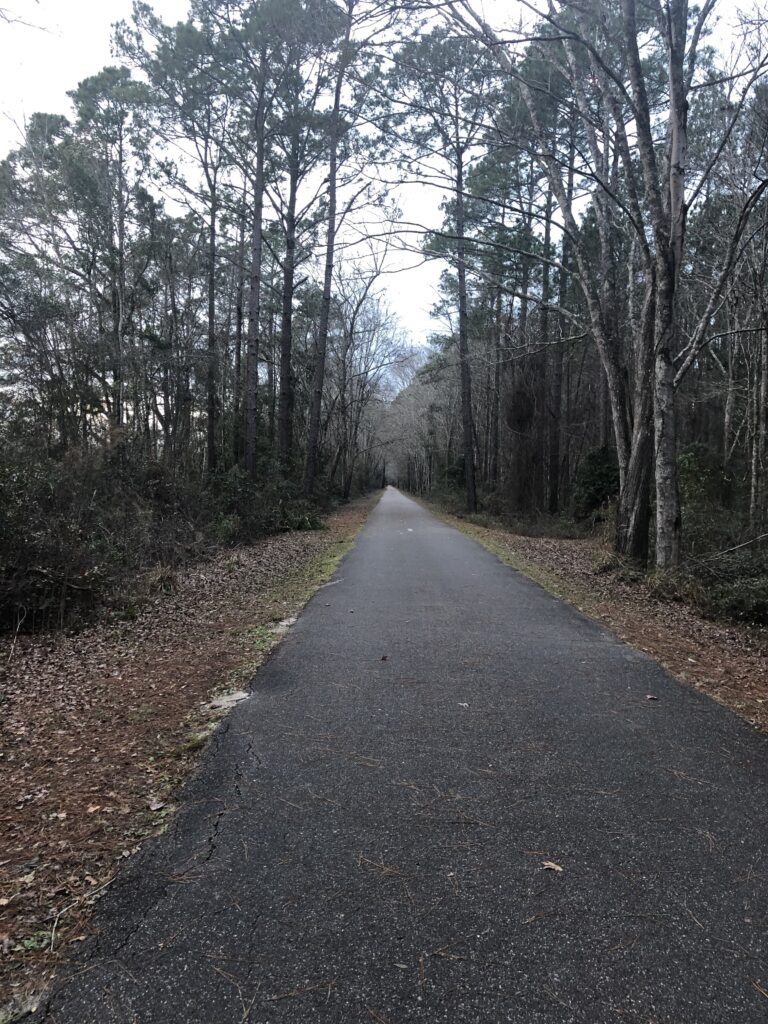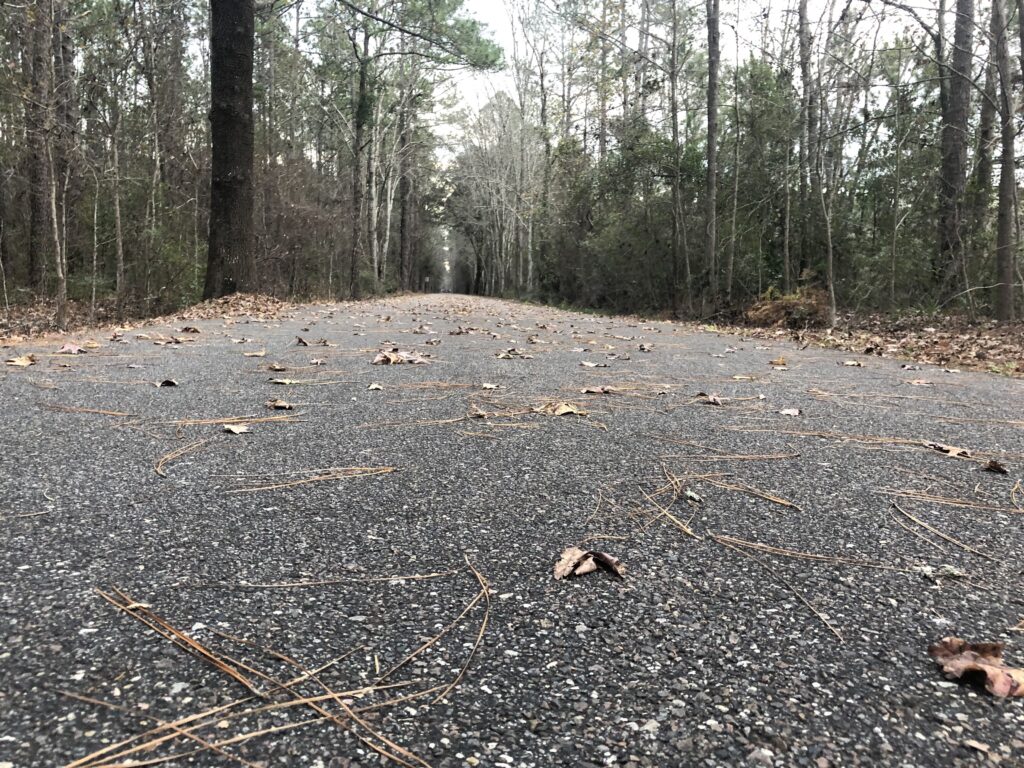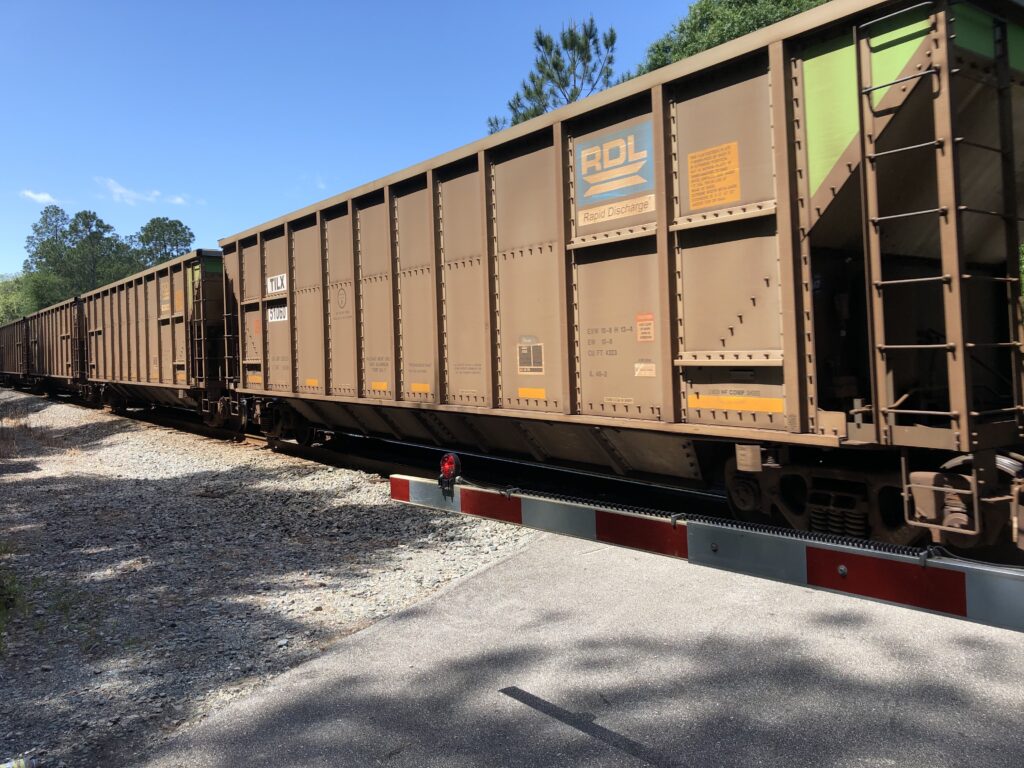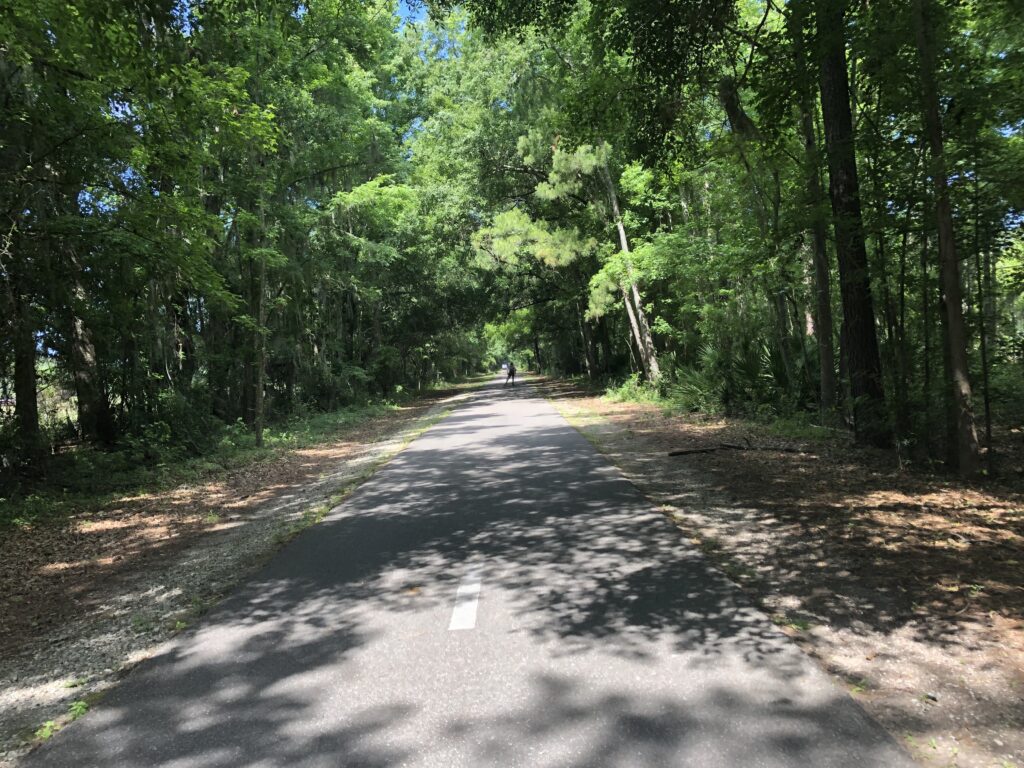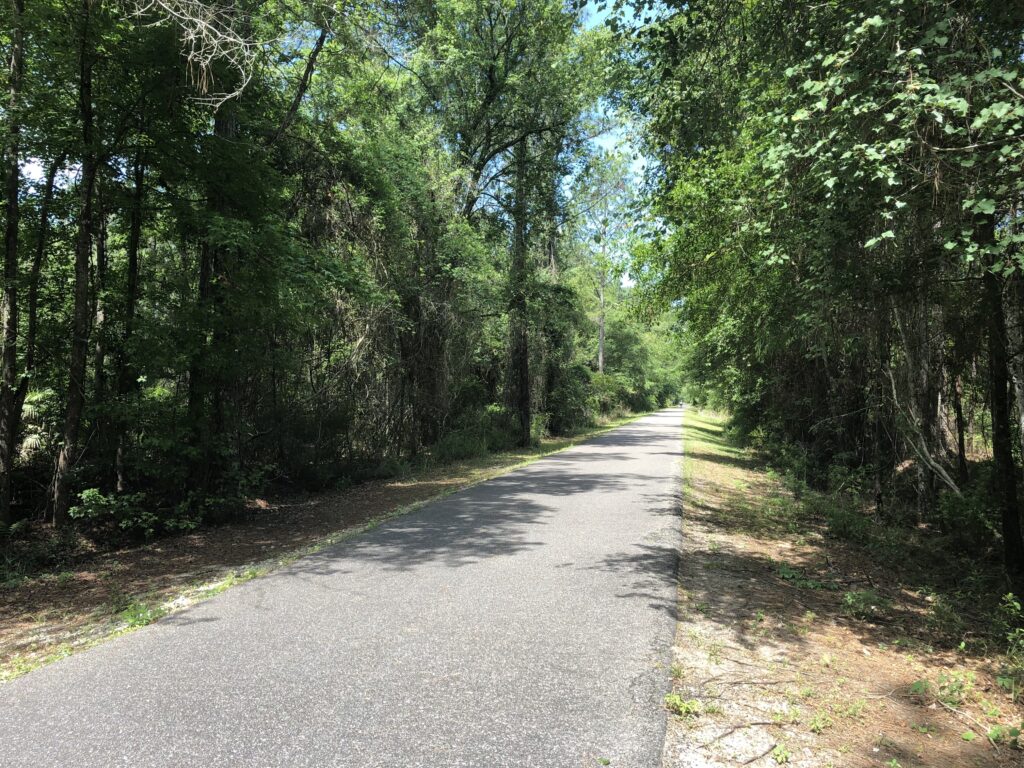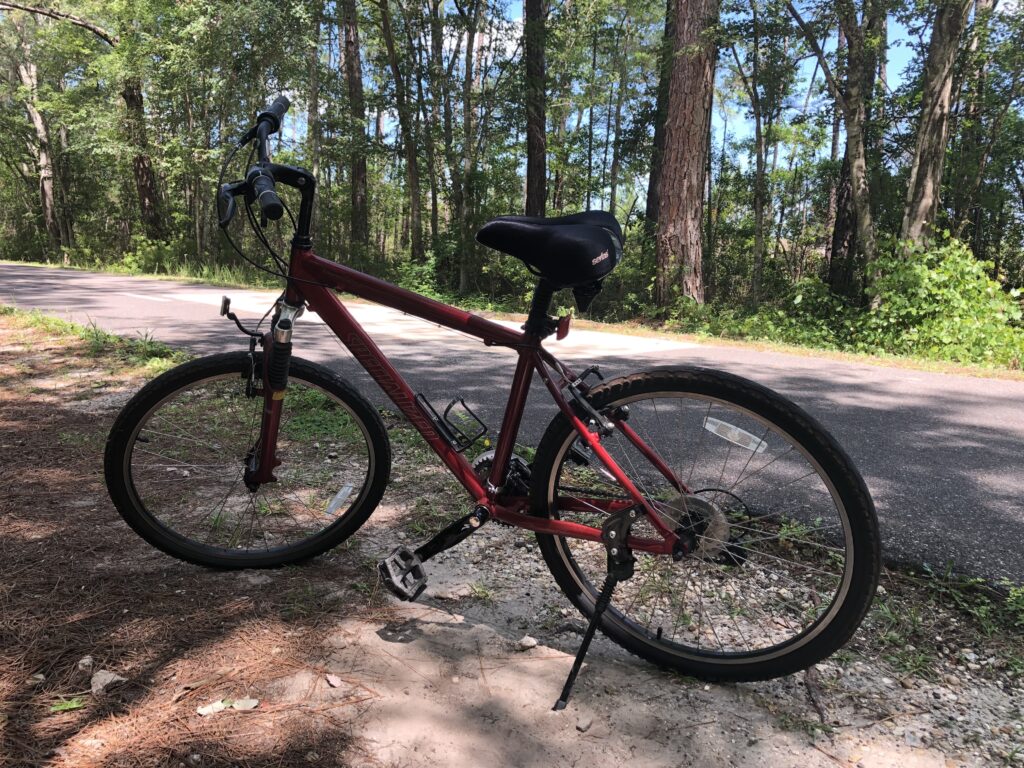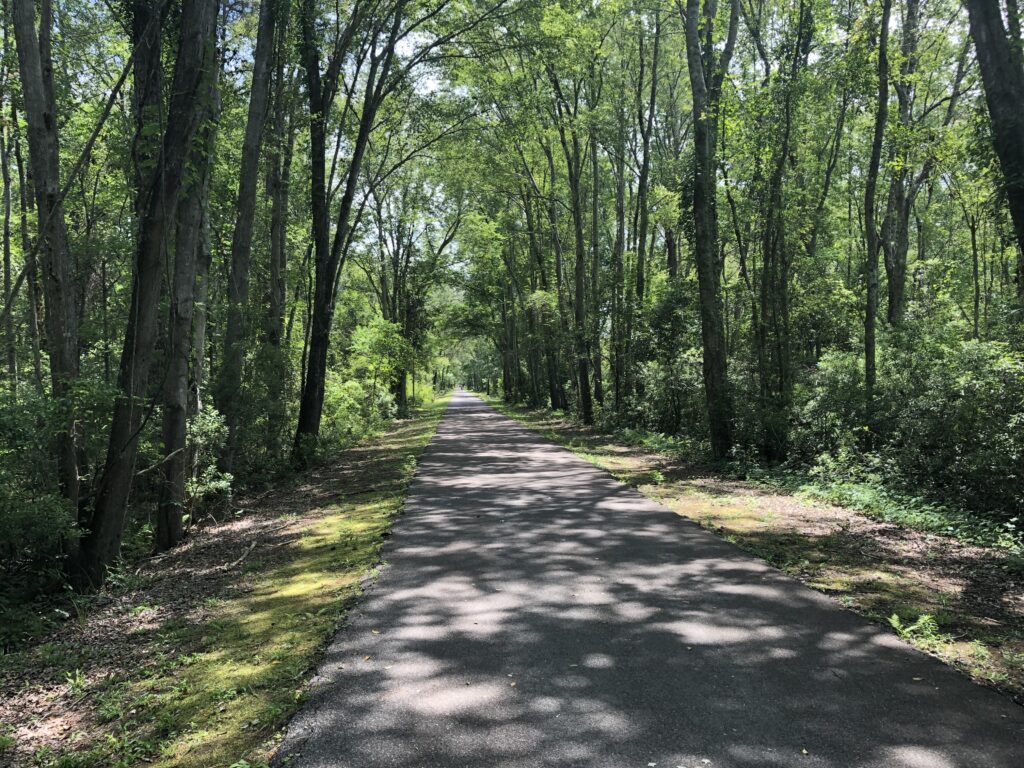The Jacksonville-Baldwin Rail Trail caters to a number of hobbies – primarily cyclists, but also hikers and horse-back riders. Starting from the east end at 1800 Imeson Road, the paved path is generally straight for 14 miles until it ends to the west in the town of Baldwin. Unless you’re a cycling enthusiast, the entire 28-miles round trip likely isn’t feasible all at once. Fortunately, there are a number of access points along the route.
Starting at the eastern most and most visited end of the trail off of Imeson Road, is a dirt and gravel parking area designed with cars with bike racks in mind. The paved path travels west between private property and easements. Given that this used to be a railroad track, the course is notably straight and visible at all times.
Passing west across Jones Road toward Pritchard, the surroundings start to become noticeably more rural. Moe farms, pastures, and large empty tracts of land are visible through narrow rows of pines along the trail’s edges. Wider sections of the trail allow for horseback riders to follow parallel to the path without needing to spend time on the pavement.
At roughly the midpoint of the trail lies Camp Milton Historic Preserve. Earthworks and an old campsite from the Civil War define the area that includes a variety of labelled plants and some wide open picnic areas. There is a small public restroom and circuit training equipment at the turn-off from the trail to the park.
Continuing west, the trail becomes even quieter before arriving at the town of Baldwin. The Baldwin trail access sits next to what appears to be an old railroad station. The trail continues for another mile or so until reaching its end at a parking lot that sits next to a pasture. Whether you are interesting in cycling, walking, or horseback riding, this is a well-designed and very accessible path for all.
I didn’t get as many photos as I would have liked – we were enjoying this trail too much to think about photos…but we’ll definitely be back. The photos below are from several visits to the trail over the course of about 5 months.

